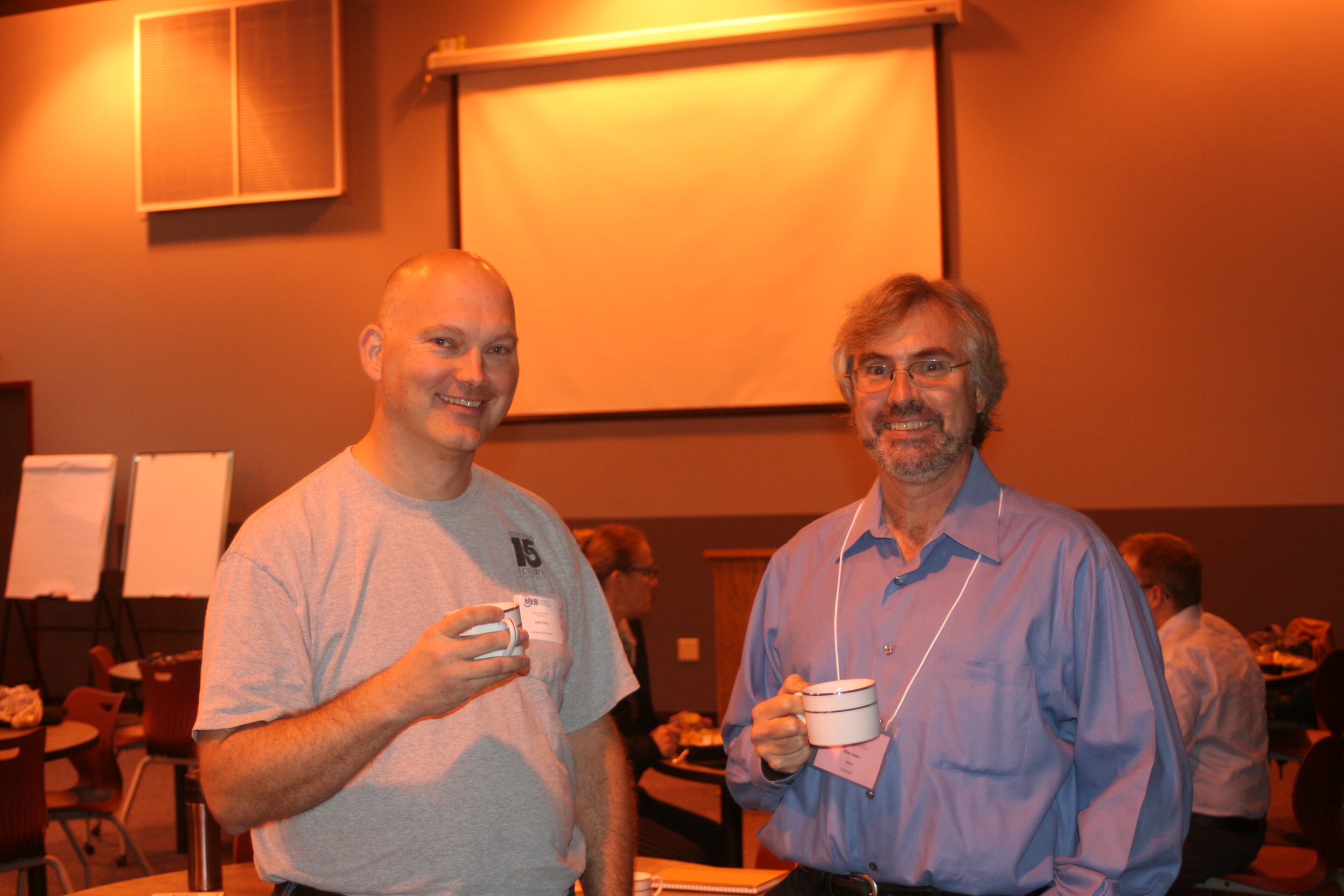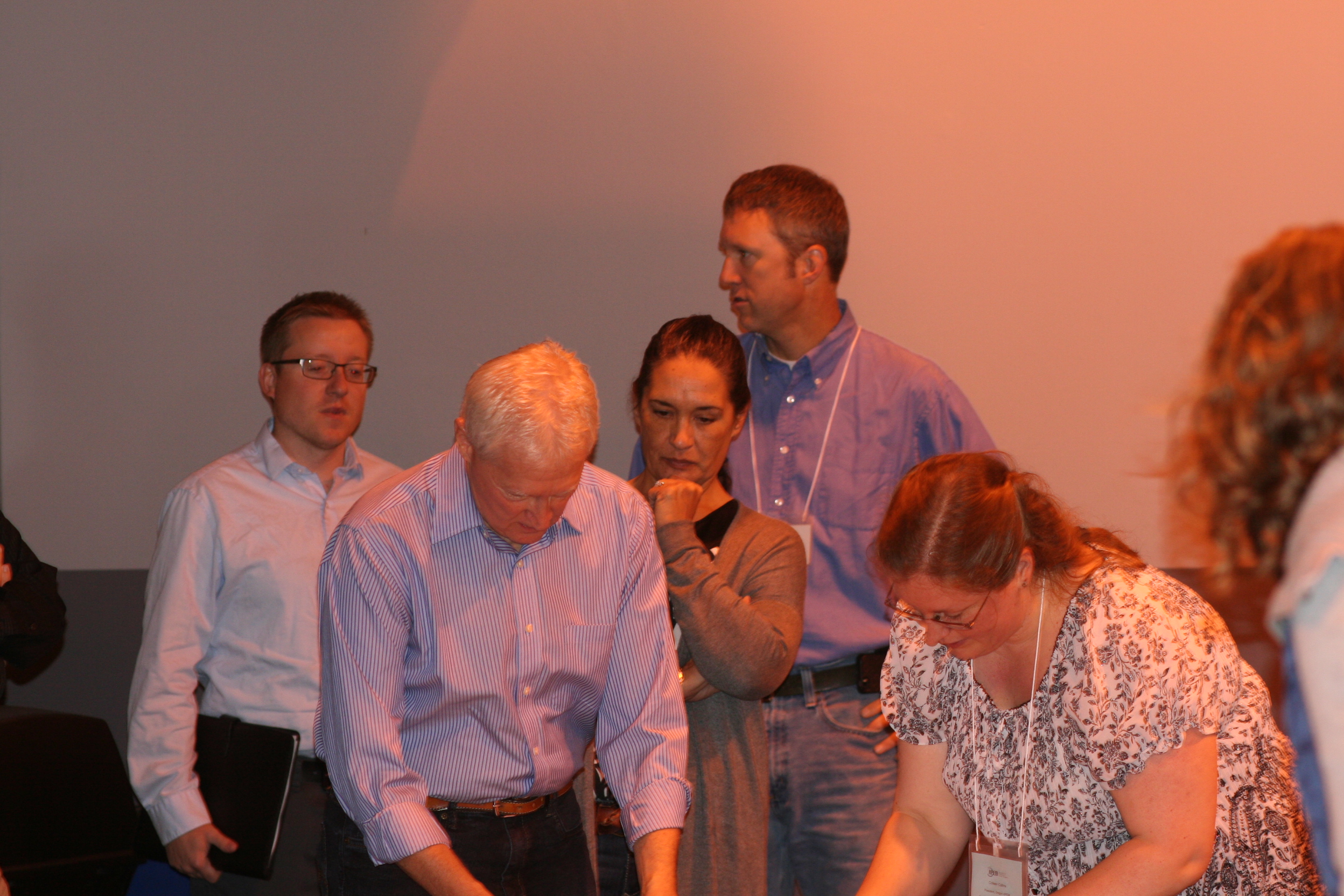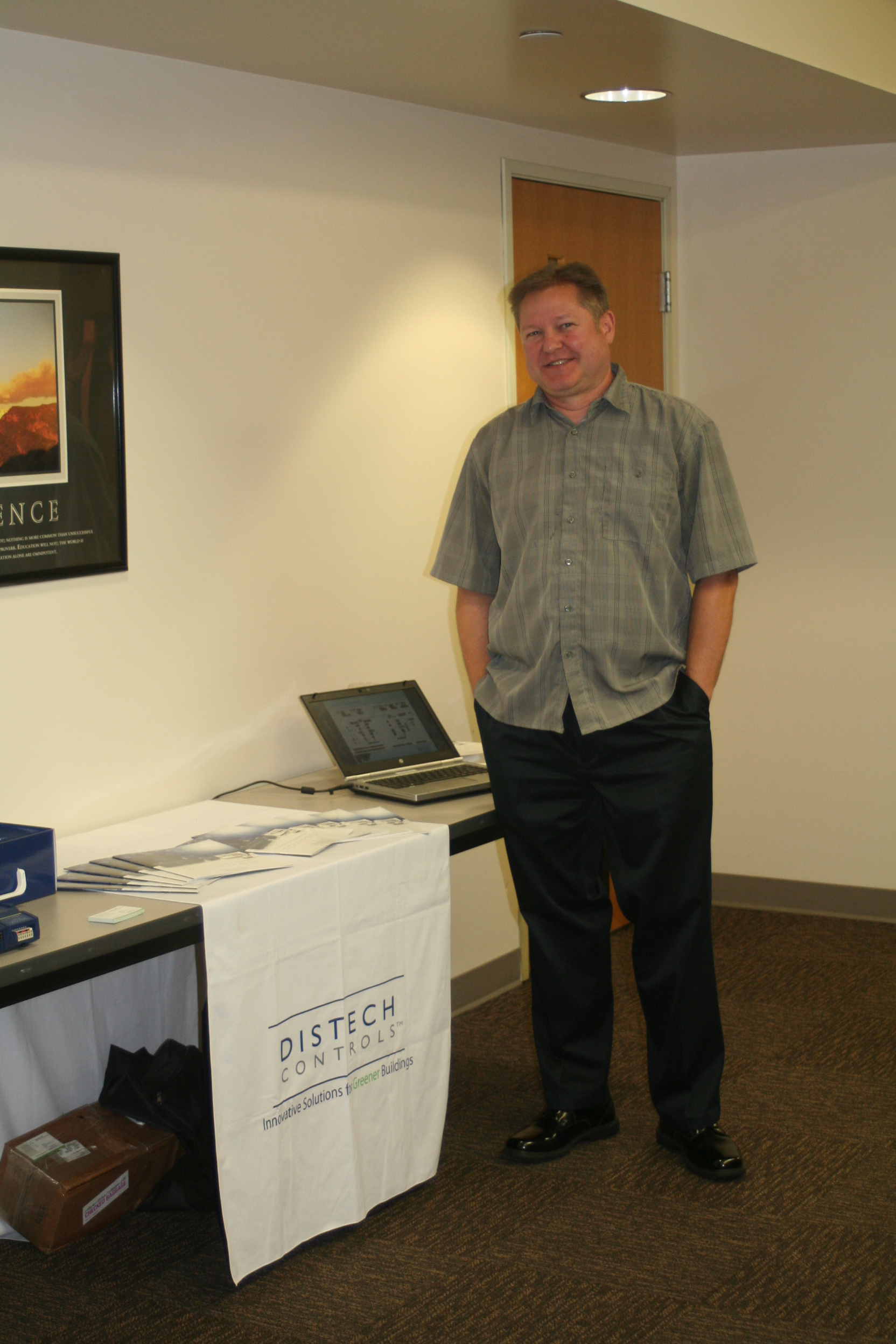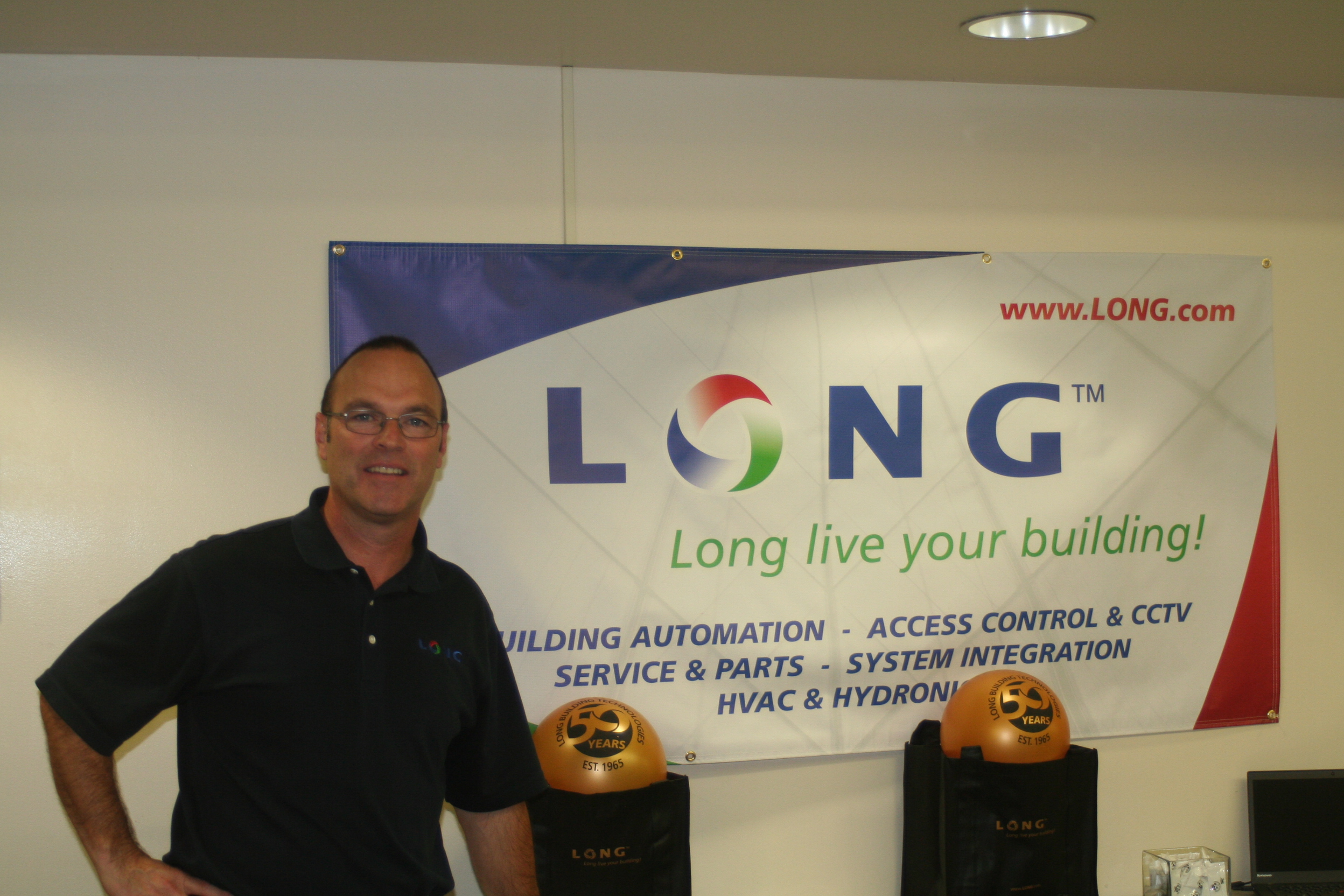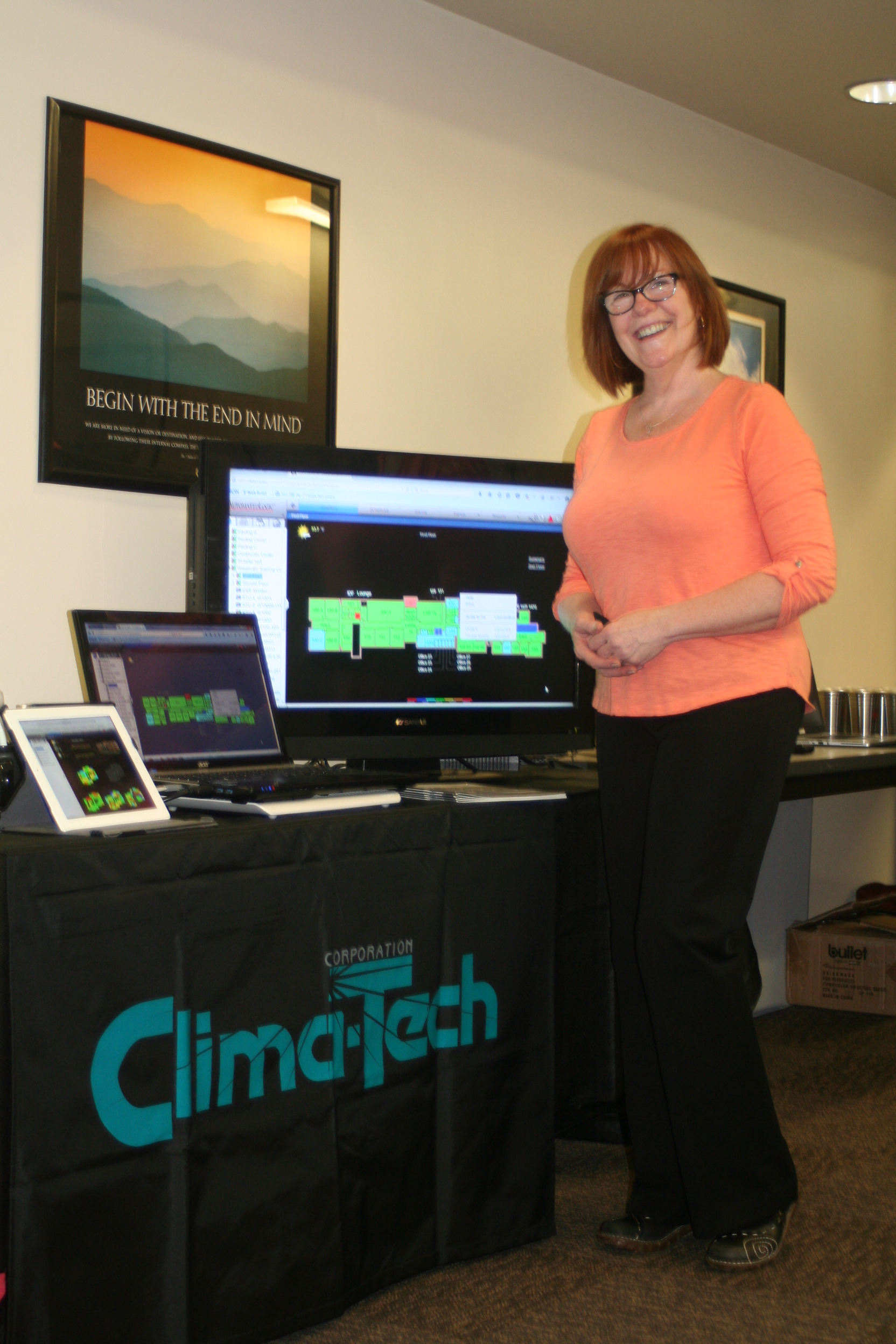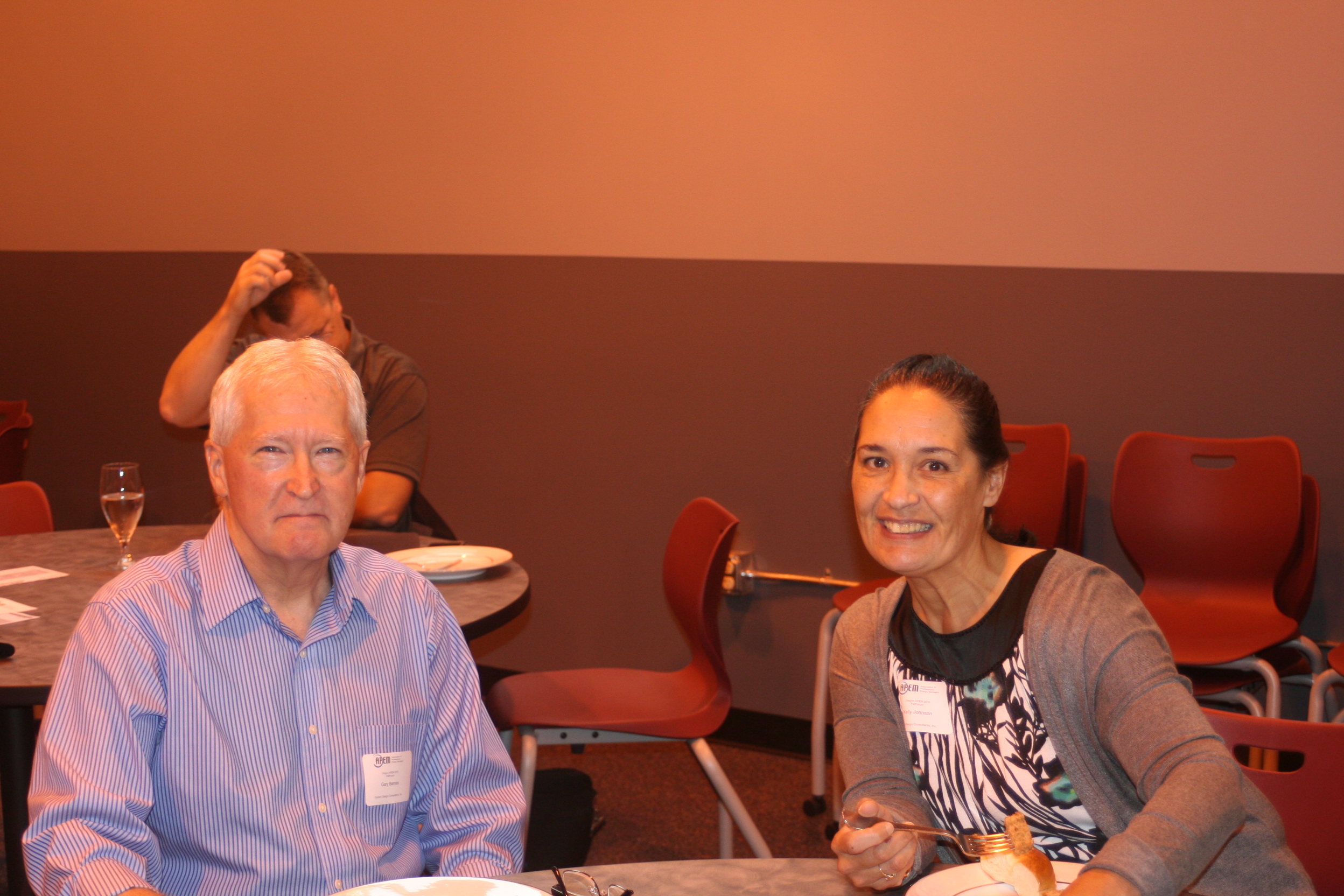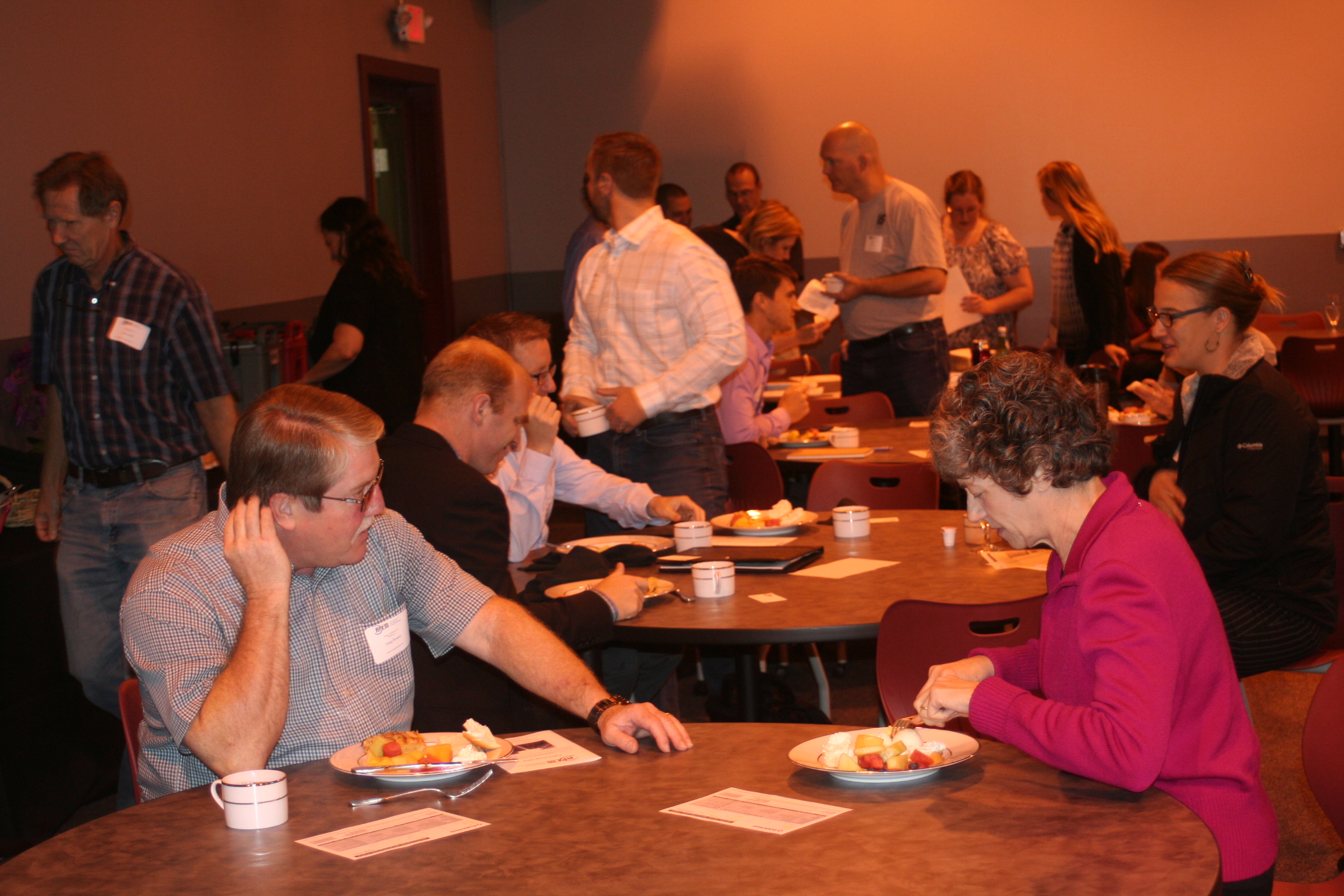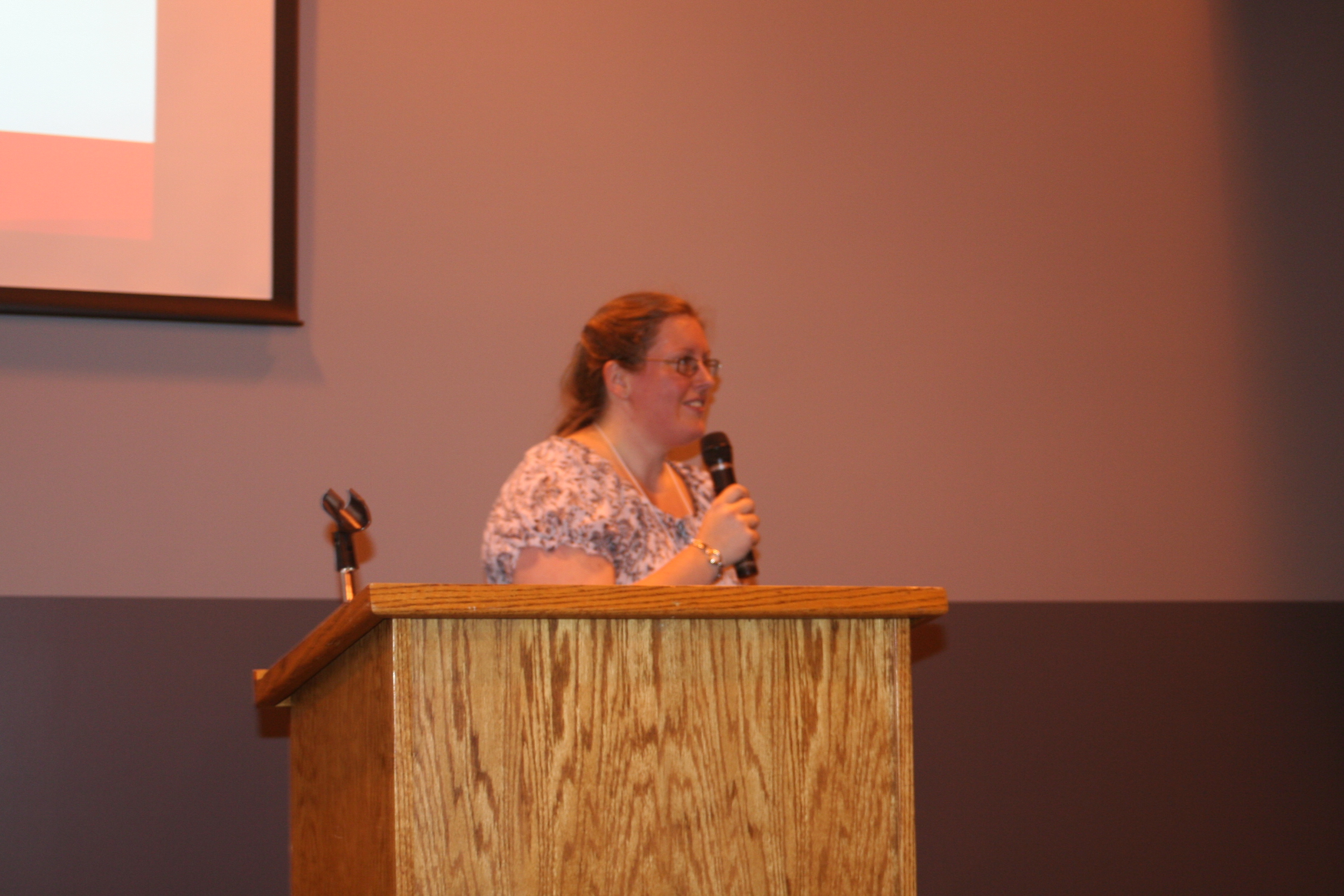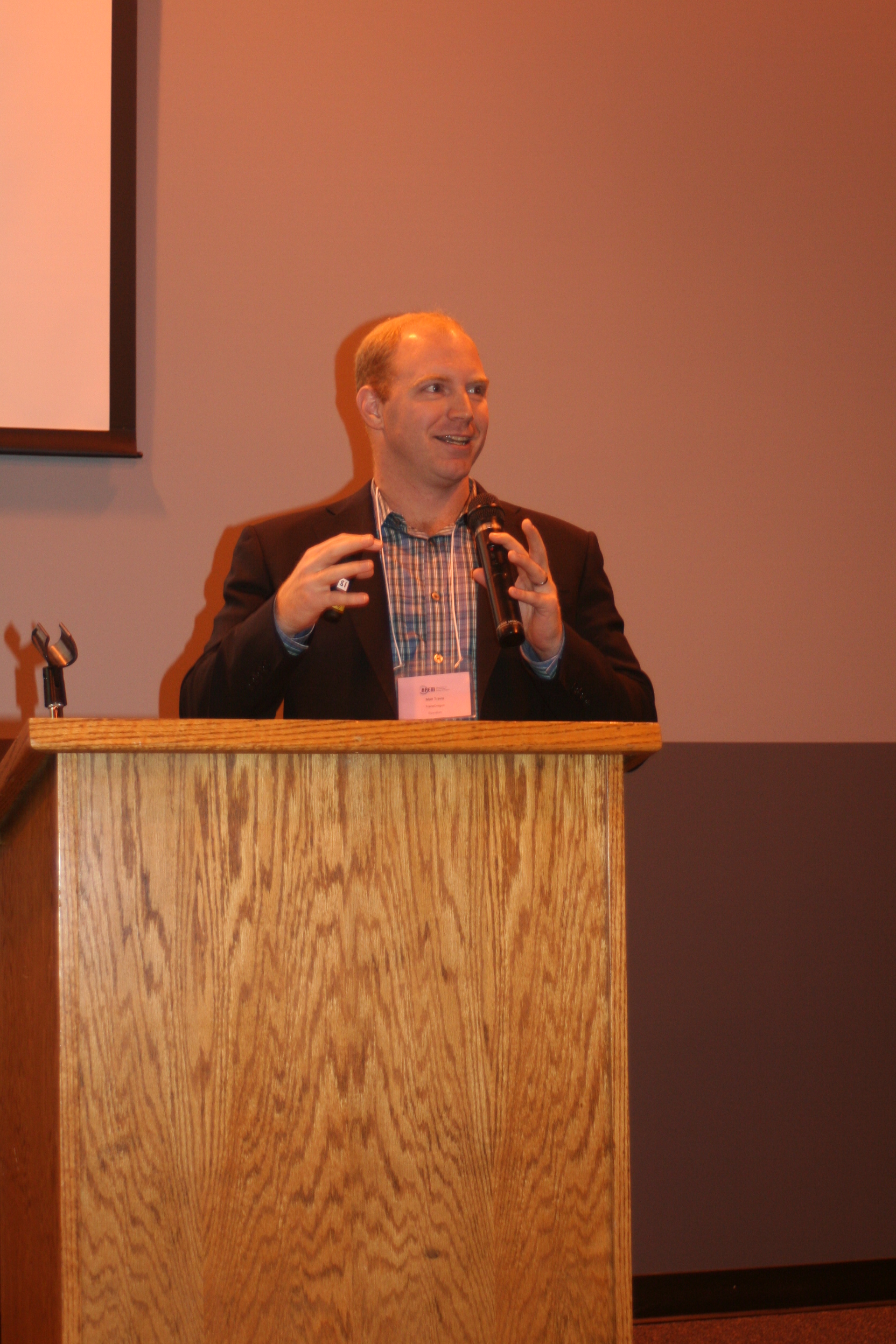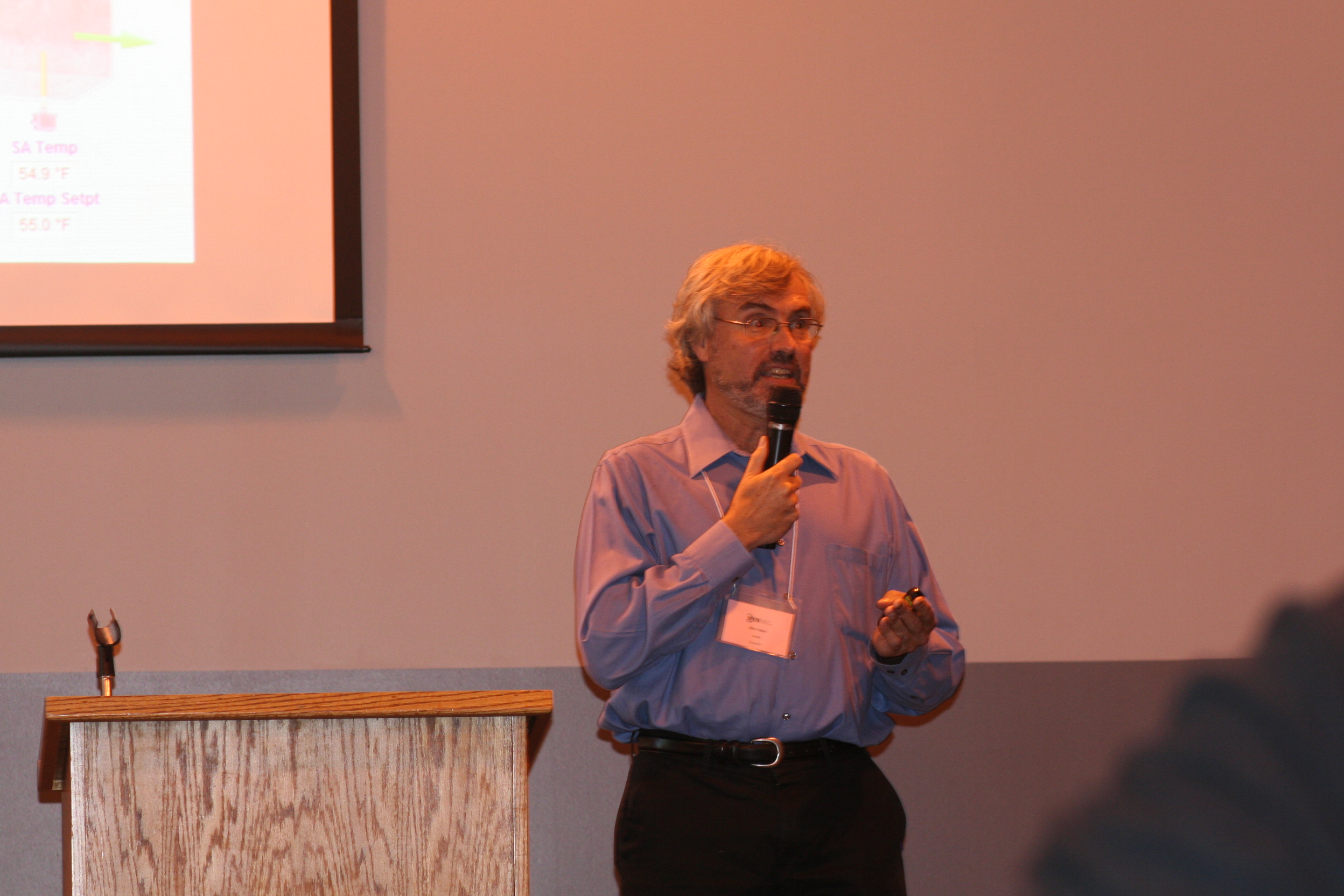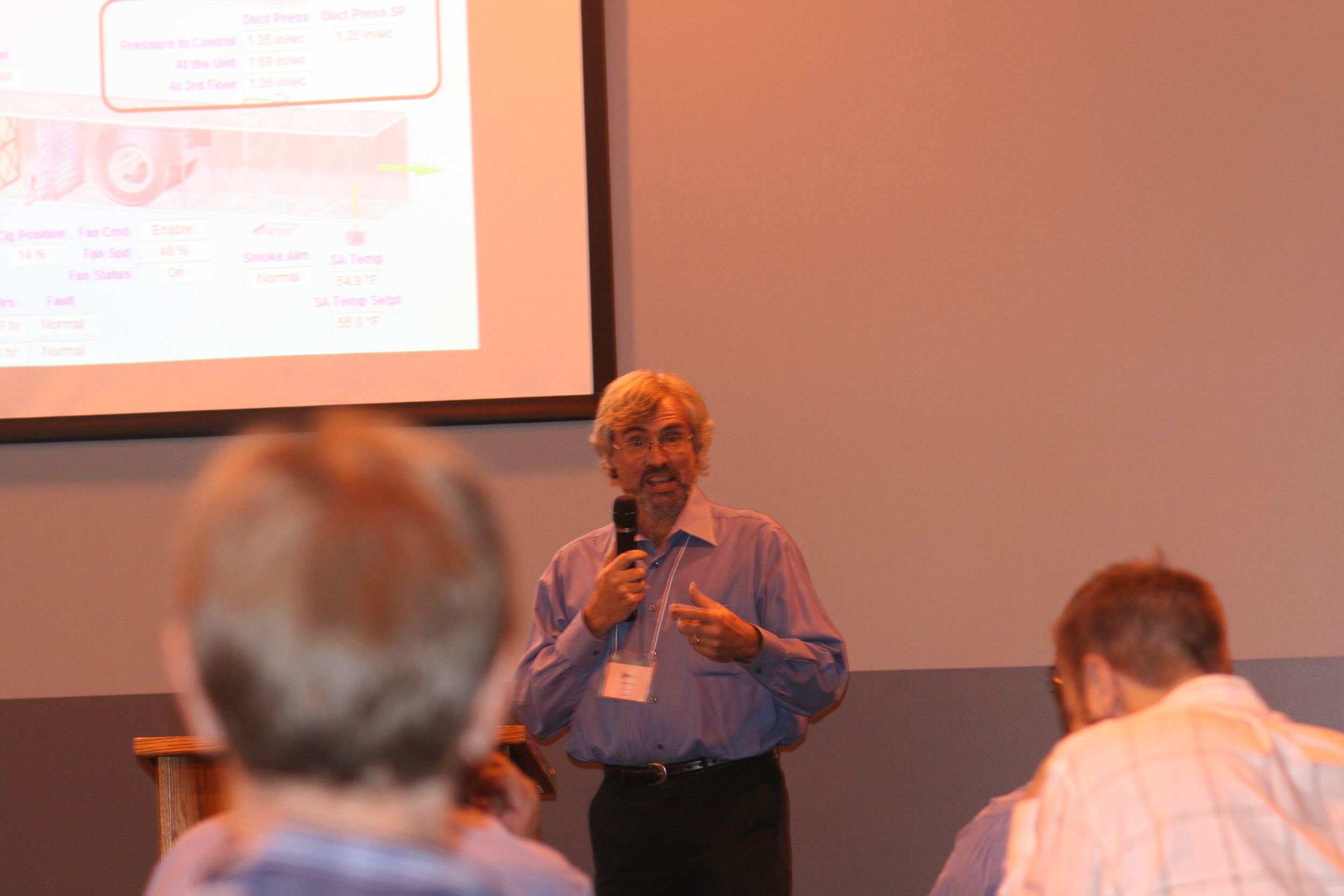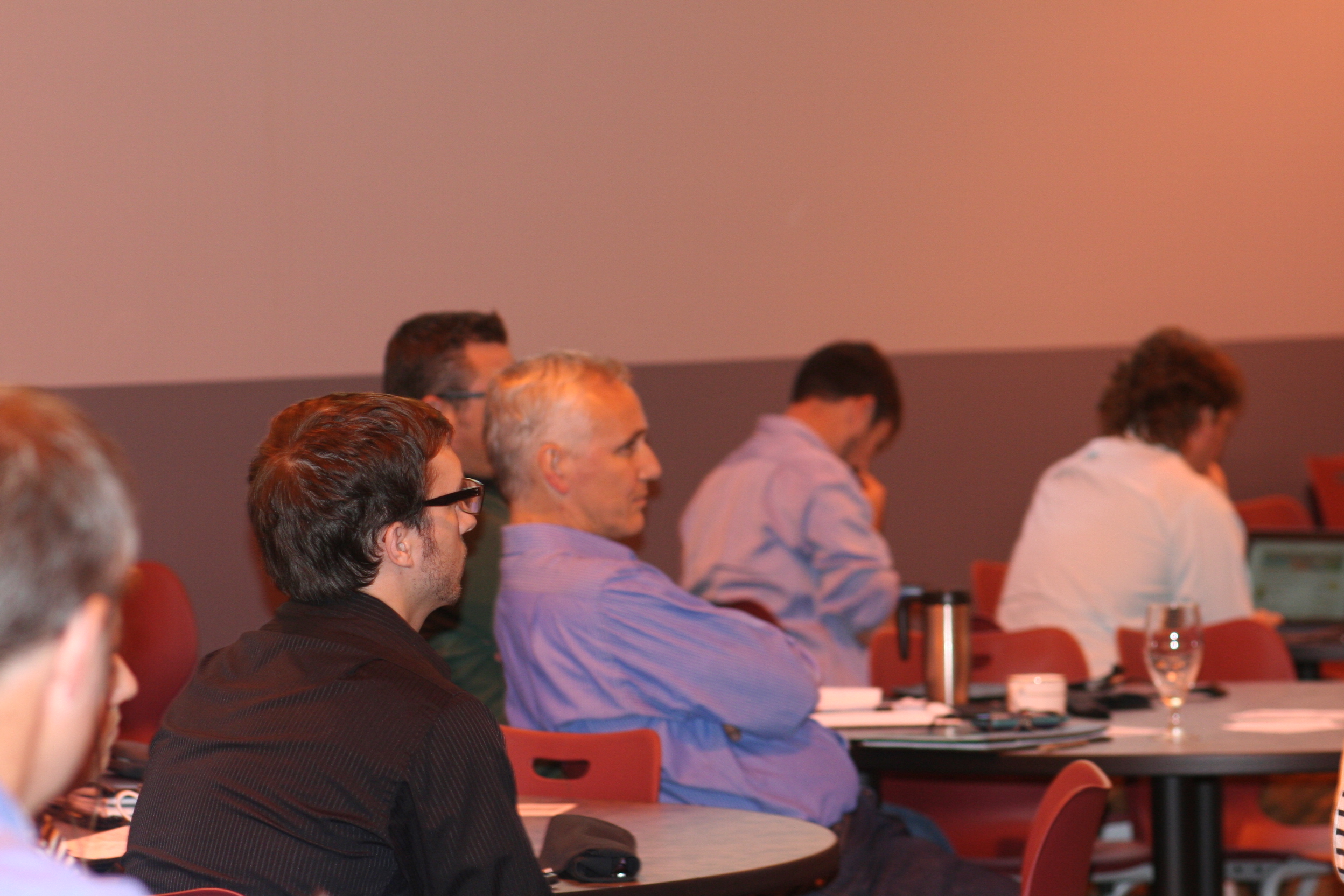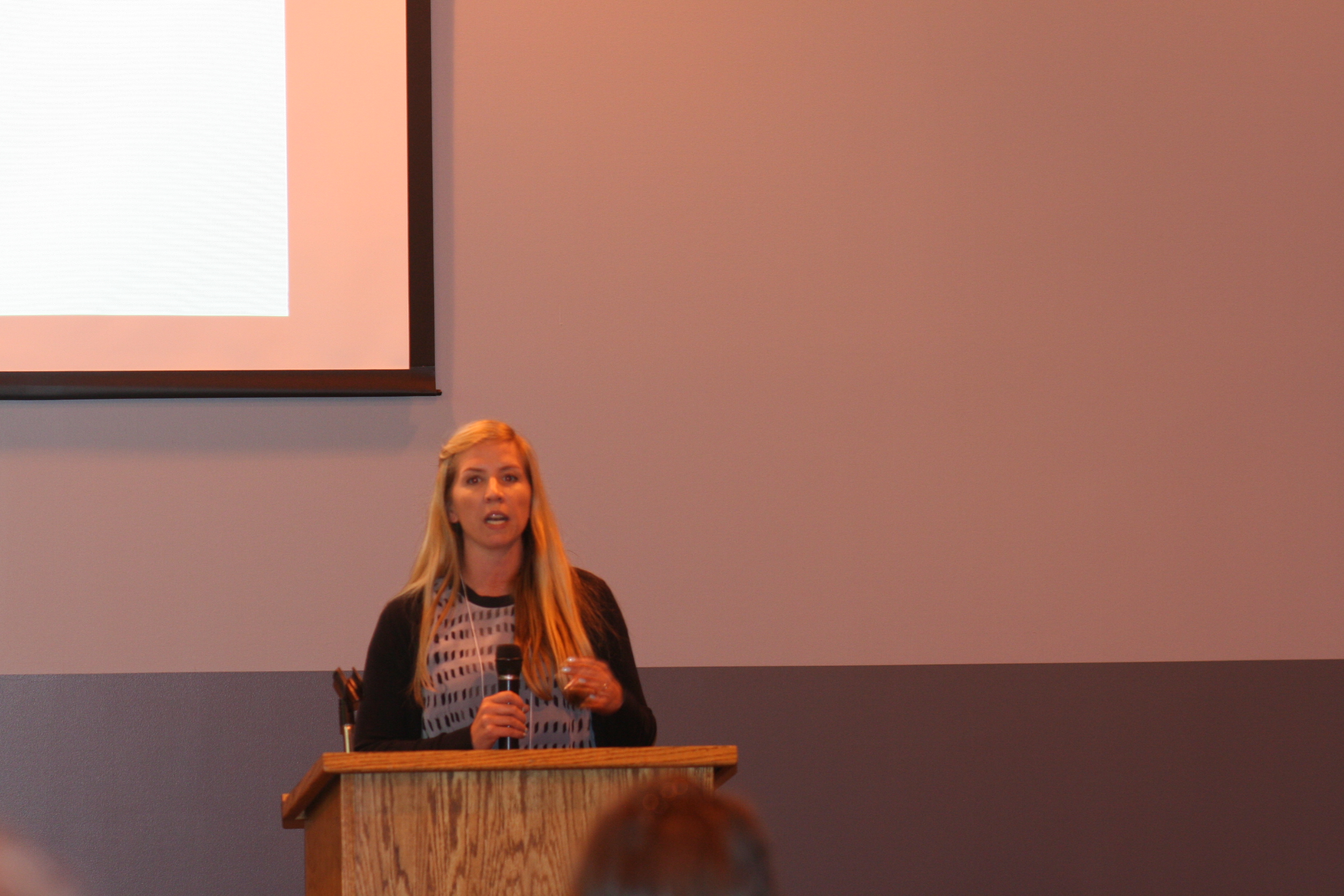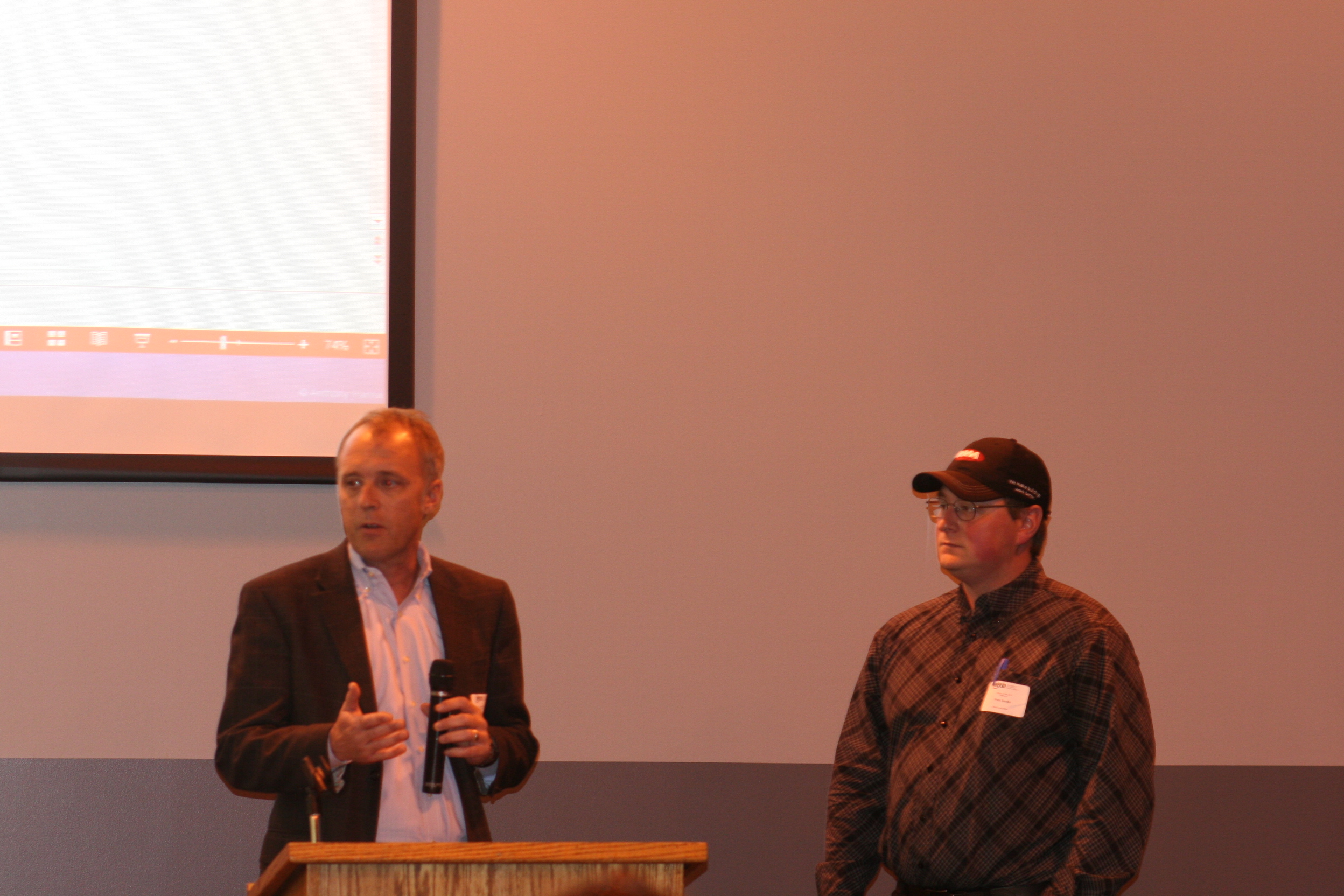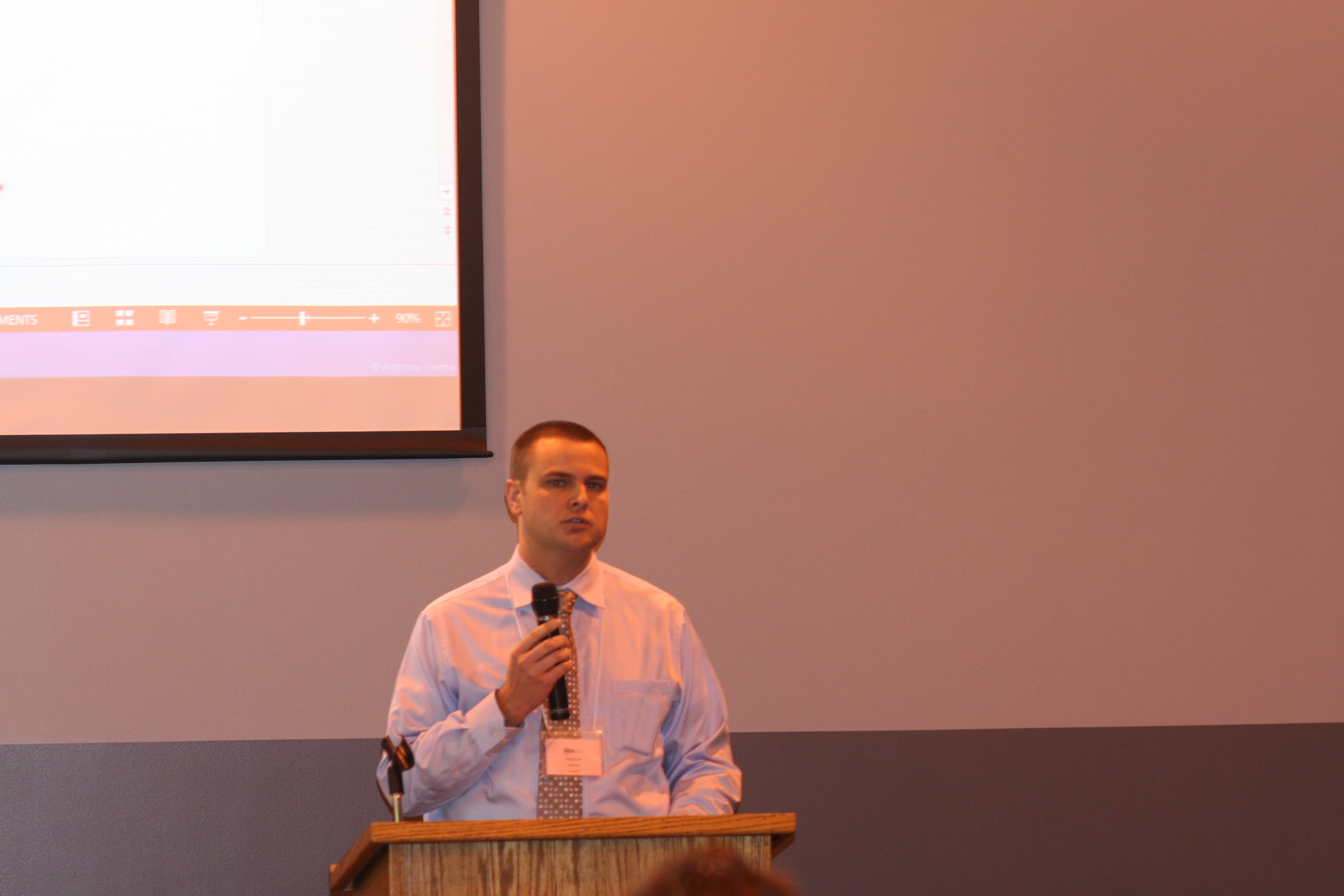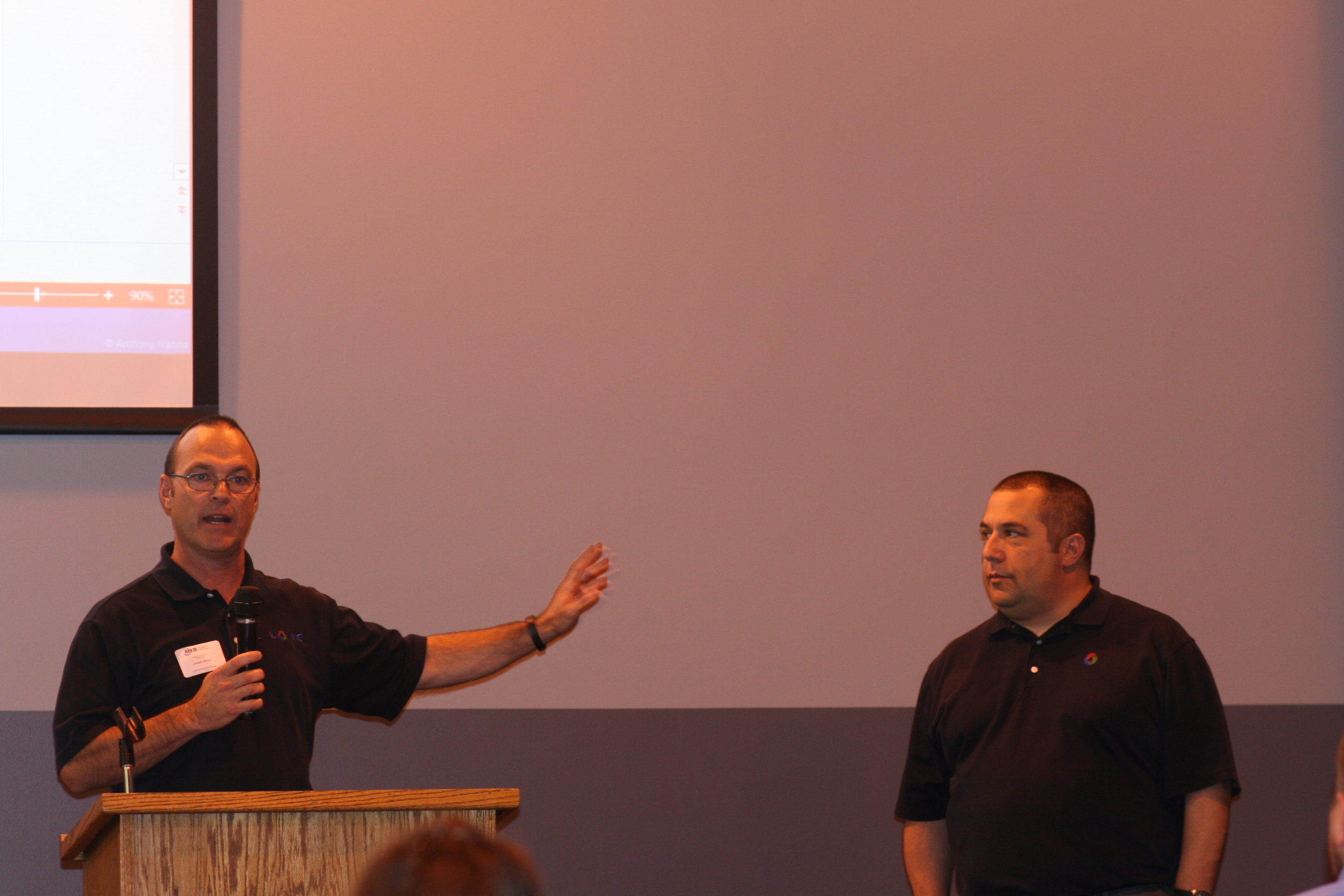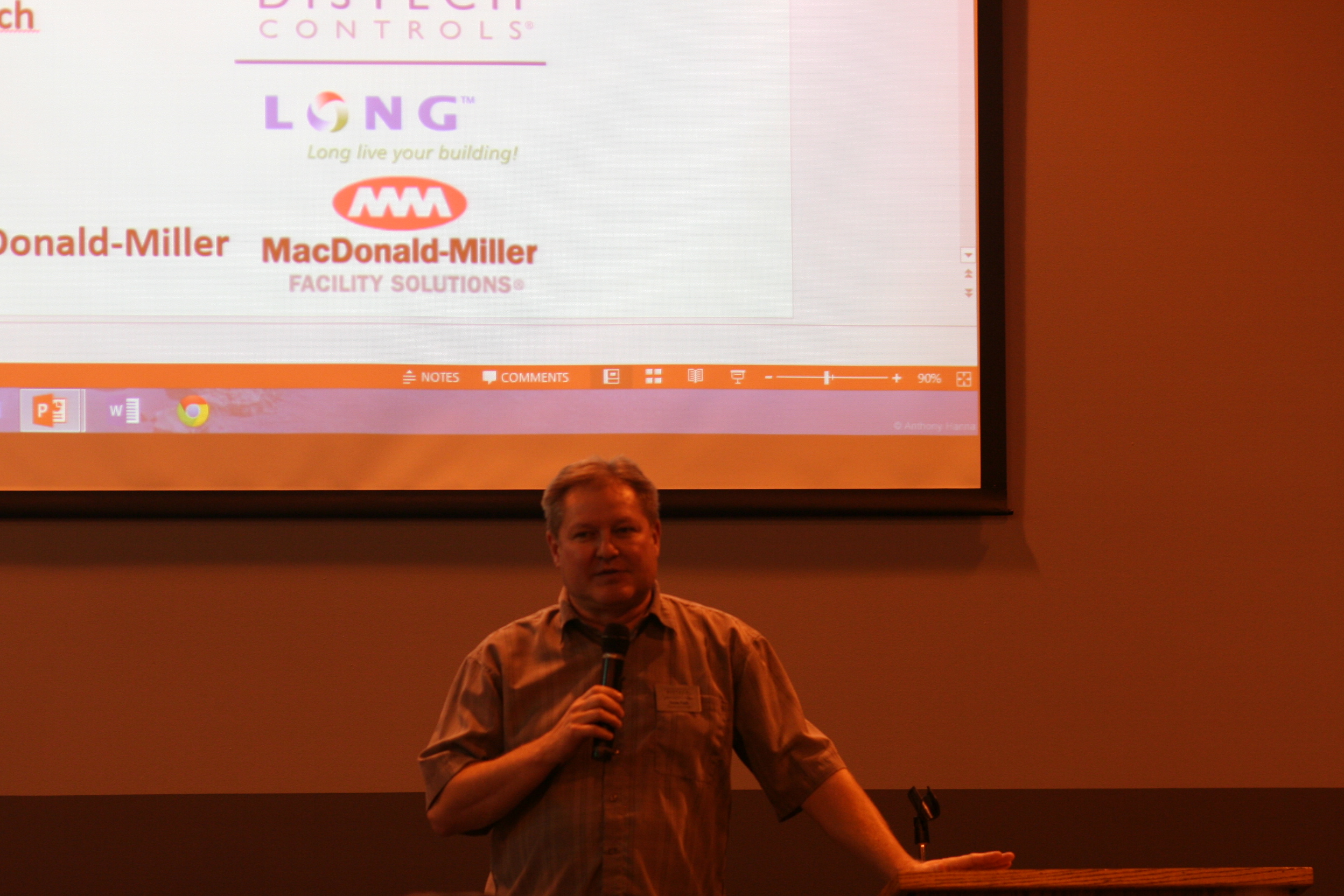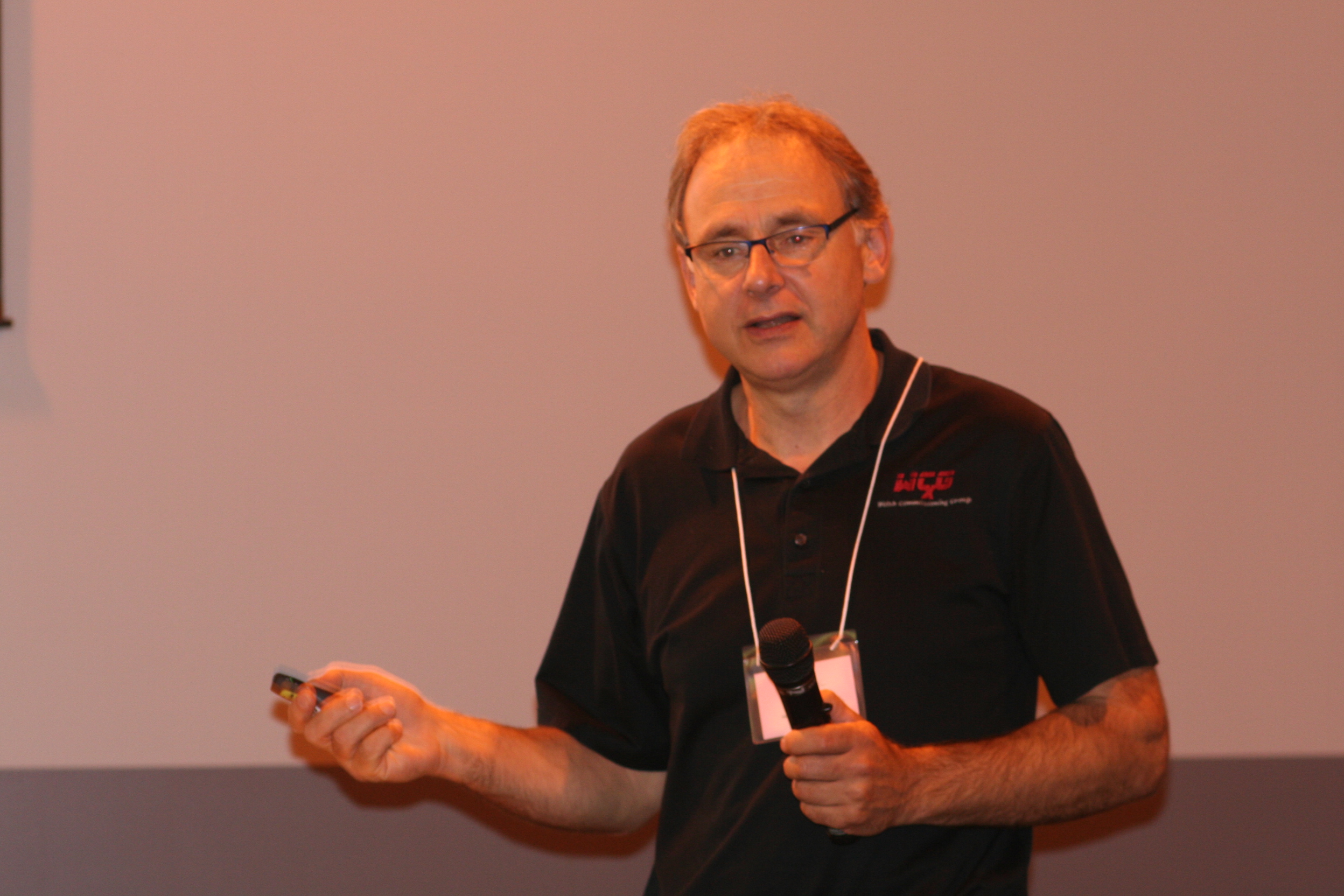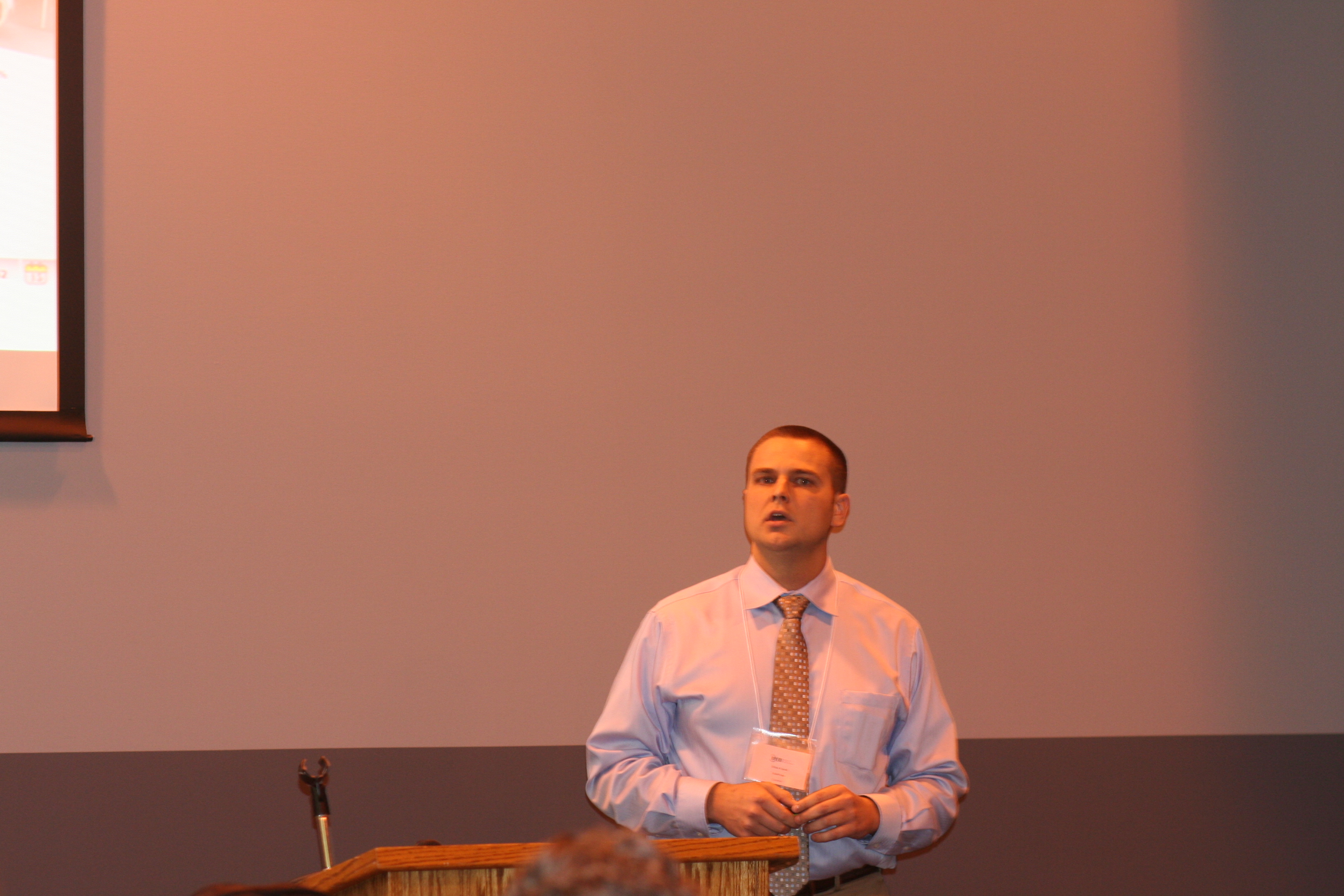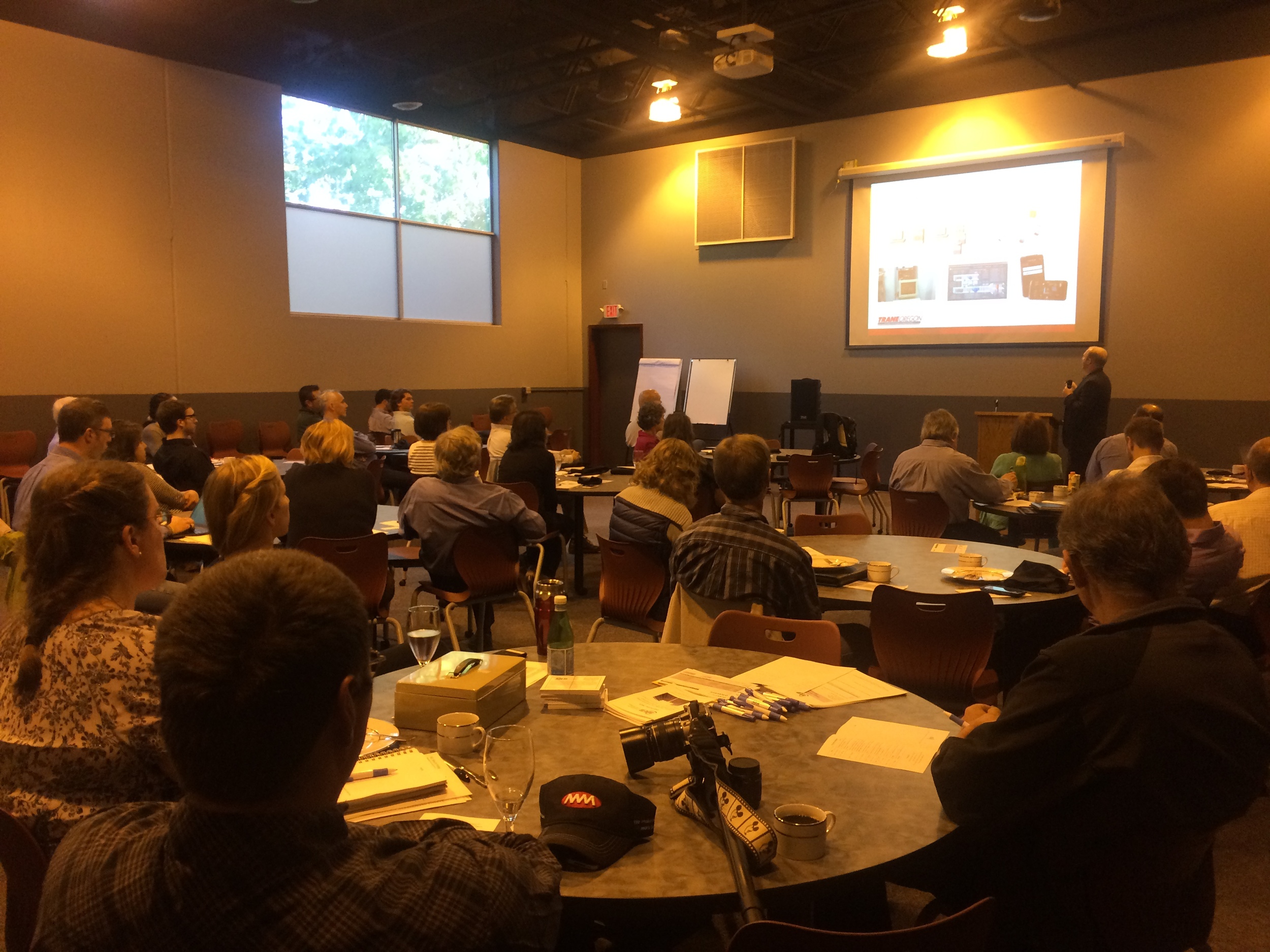Fall 2015 Forum
“Tuning, Tracking and Troubleshooting: Digital Controls for Modern Buildings.”
Building and Lighting Controls; What Do I Need To Know?
September 18, 2015
Clackamas CC, Wilsonville Training Center, Wilsonville
Attendance: 46, including 7 board members. (13 female attendees)
Vendors included:
Mike Johnson, McDonald-Miller
Kelly Snyder, Clima-Tech
Brice Kosnik, BuildPulse
Joe Moran, Long Building Technologies
Steve Watt, Distech Controls
Matt Travis, Trane Oregon: Controls 101
Travis discussed the basics of controls, which included definitions and basic systems knowledge, but most importantly described why controls are needed—needed—for best energy management. VAV, VRF, DCV and chiller plants are all systems that operate best—and most efficiently—with controls. Controls automatically monitor each station and adjust to meet efficiency settings.
The system controller is usually a computer-based program that monitors and communicates with field-based controllers. Newer system controllers are web-based, meaning that there may or may not be a local PC, and the system can be controlled via any internet access, including mobile devices. The largest and most sophisticated available controller is an enterprise system, which can control an entire campus, and provide emailed reports.
Most vendors have moved away from application-specific systems to more universal software that will allow controllability for any kind of application. This makes it easier for operators to select, purchase, install and use. Buyers beware: there is no such thing as true plug-n-play: each installation will take some time to fully integrate. Plus, if you have a control system from one manufacturer, but the boiler / chiller / RTU are made by a different manufacturer, coordination will be needed. Protocol is the language used by the system and the terminal units; make sure these are compatible.
The future of controls is cloud computing, which removes the need for a local software hub, and also better facilitates mixing controls software because it houses all the data. It also has the capability of recording all data to be analyzed if you wish.
Mike Hatten, Principal ME at Solarc, Control Designs for Energy Savings
There are mixed-air problems in half the HVAC systems in the U.S.
Digital Controls have the ability to significantly reduce energy costs—often 20%-30%. Controls interfaces for end users are now typically very interactive graphics and diagrams, making them very easy to use. It is recommended that you use the ability to configure the graphics on the screens accurate to how your specific system works (called graphics accuracy commissioning).
Mike illustrated several graphics interface pages and report charts —including screen shots from actual users—and demonstrated how to identify problems between data points, and some situations to look out for. It is good to use the graphics screen readouts as a diagnostic tool.
Best practices: Duct static pressures, and supply and discharge air temperatures, are good metrics to evaluate and identify system performance. By monitoring these readings and adjusting, you can reduce the amount of simultaneous heating and cooling necessary at the discharge point(s). Focus on minimum set points.
Broken controls need to be fixed because they waste energy: fix leaking valves, repair worn-out dampers, calibrate defective sensors.
Bryan Welsh, Welsh Commissioning Group Inc., Commissioning Your Controls—the project delivery process
It’s important in commissioning to start with the end in mind.
Bryan noted that it’s important to be careful when specifying equipment because often equipment and controls weren’t designed to be together—they can function together just fine, but operating information is often spread throughout many places in the product documentation. And because different trades are installing different equipment and controls, efforts are not coordinated, so equipment won’t work properly and no amount of controls can fix it. There can be thousands of problem points.
Design and submittal review are key opportunities to find issues.
Modern HVAC systems have lots of mechanical loops in them, and lots of control loops. PID Loop represents the kind of reactions that controls offer. Automatic Loop Tuning monitors all sensor points and makes continual adjustments.
Presentations:
Forum Feedback Forum
